SEO for Moving Companies: 6 Strategies to Generate More Leads
Key Takeaways
- 46% of Google searches have local intent, indicating a significant portion of searchers are looking for businesses potentially like yours.
- 60% of smartphone users utilize the "click to call" option to contact businesses that rank in local searches, emphasizing the importance of local SEO for moving companies.
- SEO optimization not only increases conversion rates but also enhances brand awareness and credibility, ultimately leading to higher visibility and customer acquisition.
Optimizing your moving company website for SEO is one of the easy ways to improve your city-to-city or interstate moving business. But even if you have tried your best, there are probably some SEO tactics for moving companies you have yet to explore.
Optimizing your website, business pages, and content for SEO helps you increase your potential for visibility on search engines (think Google & Bing). After all, 46% of all Google searches have local search intent, meaning almost half of all searchers are looking for businesses like yours.
Of this 46%, 60% of smartphone users use the “click to call” option to contact businesses that rank on their local searches. Map apps also send 30-40% of traffic to local businesses.
All these mean optimizing your business for SEO brings your prospects closer to you (because you’ll rank higher in Search Engine Results Pages (SERPs) where you should be.) Ranking higher means they can quickly learn about your services and convert to customers.
Aside from increasing conversion, optimizing for SEO increases brand awareness and makes your business more credible. So, if you have started and are yet to see results, we’ve gathered 6 SEO tactics for moving companies that we have used for local companies like Allied Van Lines to achieve a 58% increase in organic traffic.
6 SEO Strategies for Moving Companies to Get More Leads
SEO increases your exposure to web users who need you, and here are six ways to increase brand awareness and convert visitors from your GBP or web pages:
1. Claim/Create your Google Business Profile (GBP)
The Google Business Profile (GBP) is a free tool that allows businesses to manage their internet presence across Google Internet services (including Search and Maps). It helps businesses create an online store to easily interact with prospects (and customers) at their physical location or within a specific service area.
Through GBP, local businesses receive an average of 1,260 views each month, which breaks down to 943 views on Search and 317 on Maps. Aside from website traffic, this average monthly view is enough to keep your business active.
To reach more customers, claiming your GBP is the first step, and here’s how to go about it.
If you don’t have an account, head to Google Business Profile and click on the Manage Now button:
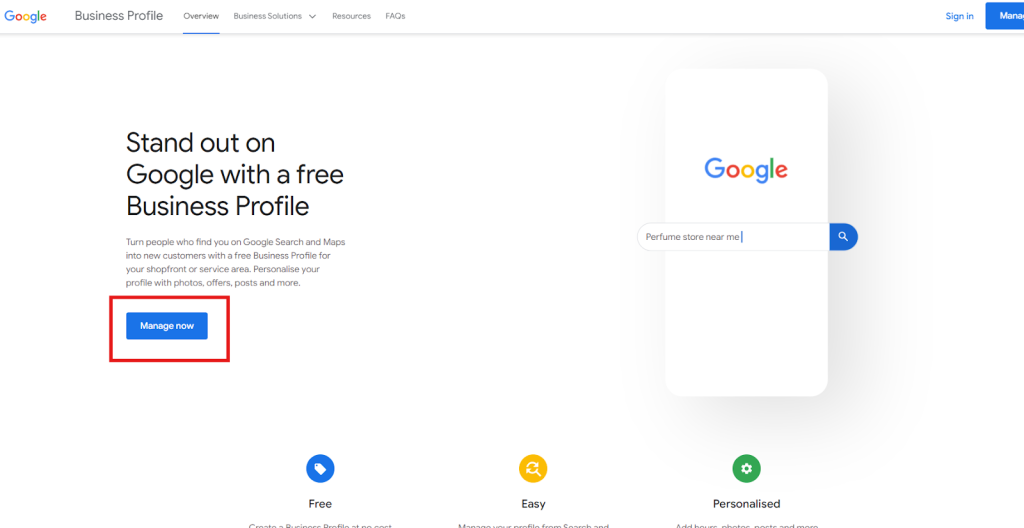
Follow the next prompts to add information about your moving company. This includes the business’s name, address, and phone number (NAP). It also includes the website URL, working hours, office location, if any, and other information. However, if you already have a business account but isn’t claimed, you’ll see something like this:

This means you need to claim and optimize your profile.
Tip: If you don’t have a physical location, you operate a “service area business (SAB),” and you can specify these areas as seen here:
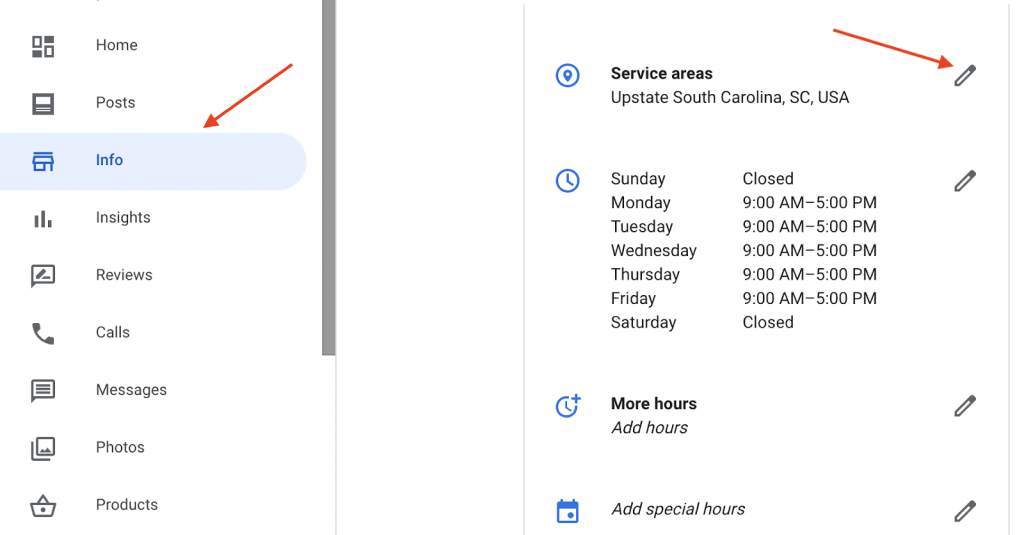
What next? Optimize your listing.
This is where you provide accurate information about your business and use location-sensitive keywords to improve your chances of ranking online. Note that the more information you provide about your business, the higher your chances of securing a prominent position on the local search results.
To get started:
- Fill out all the information on your profile as required. Don’t leave anything out except you have to. Even Google advises this:

- Use hyperlocal keywords in your profile to avoid appearing spammy to your potential customers. A good example for your moving company could be “Texas moving company” OR “(business name) + moving truck rental.” You can even consider “(business name) + long-distance moving company in Ohio.”
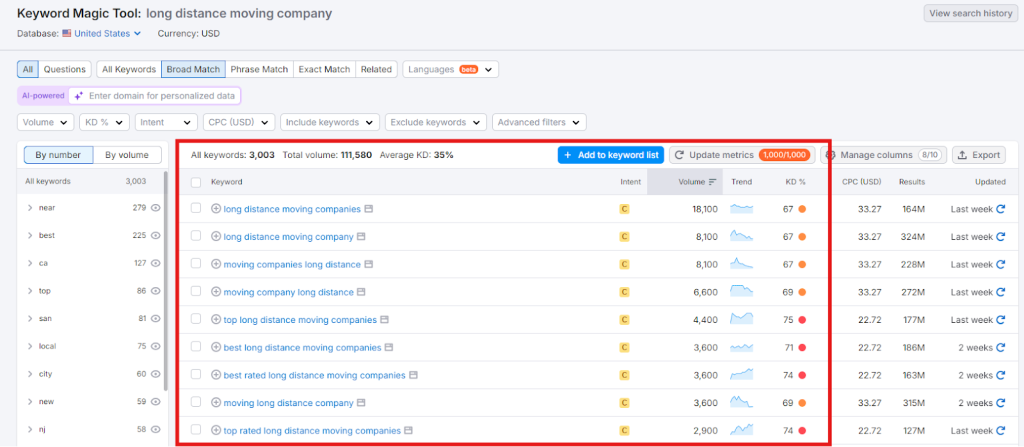
As you can see from the screenshot above, there are thousands of Google searches for these keywords every month.
- Ensure that your business Name, Address, Phone number, and website are accurate and consistent across all your online channels.
- Add high-quality visuals to increase engagement. Here’s an example from Texas Moving Company Inc. showing their fleet of trucks and vehicles.
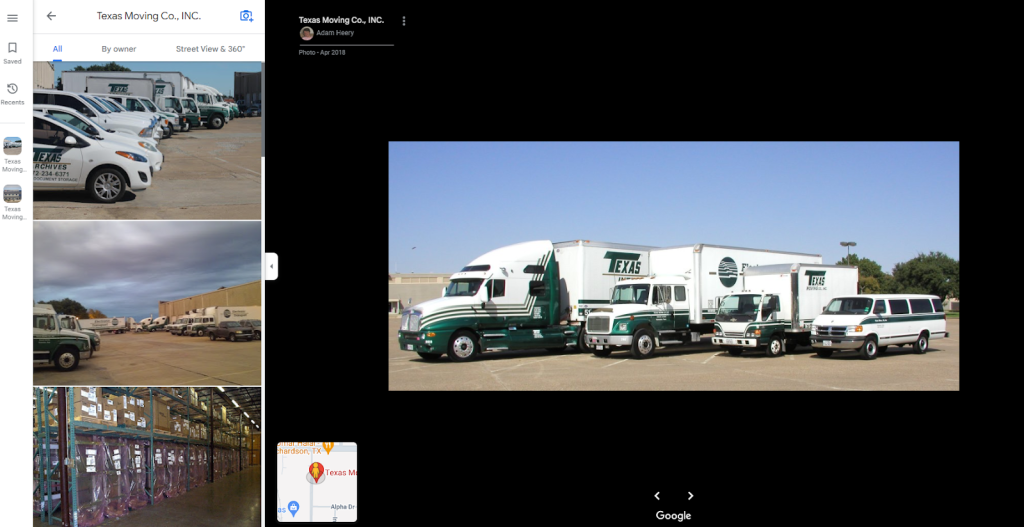
- Use schema markup to appear on rich snippets and enhance your visibility on the local search results. Read more about schema markup here.
The next step is to add categories:
GMB categories are among the top ten factors influencing local search results. They rank #1 and #7, respectively:
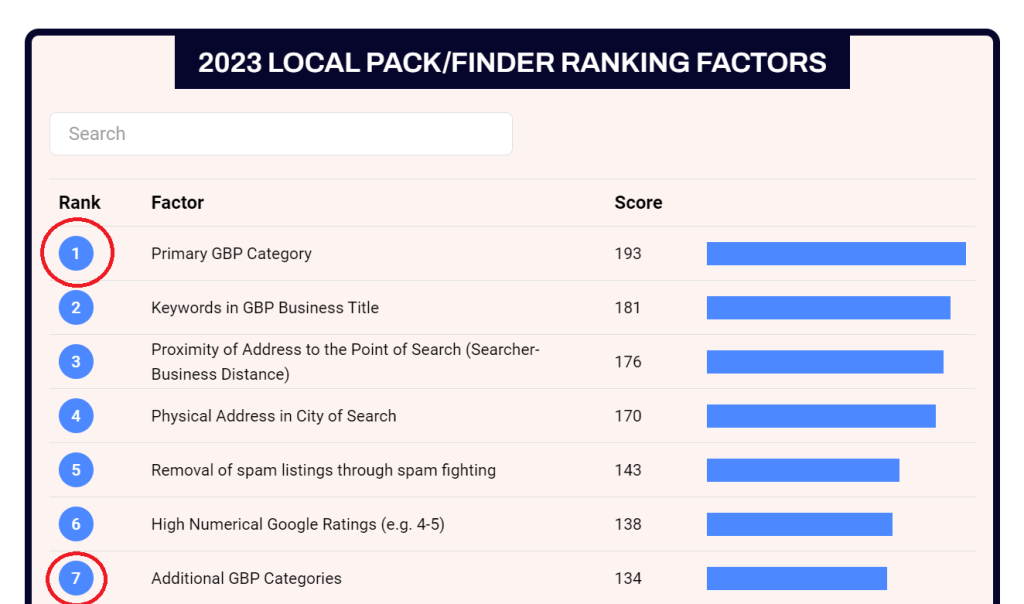
If you get the categories wrong, your chances of ranking on the local pack are slim. Here’s how to use the SEO for moving company tactics to appear on local packs:
- Use GMB Everywhere to find out what categories your competitors are ranking for. See “GMB Cat” below:

Clicking on Find More will prompt you to its ‘Category Finder Tool,’ where you can select the top categories with their search volume. You’ll need to pay for the software to access more categories to target, but it looks like this:
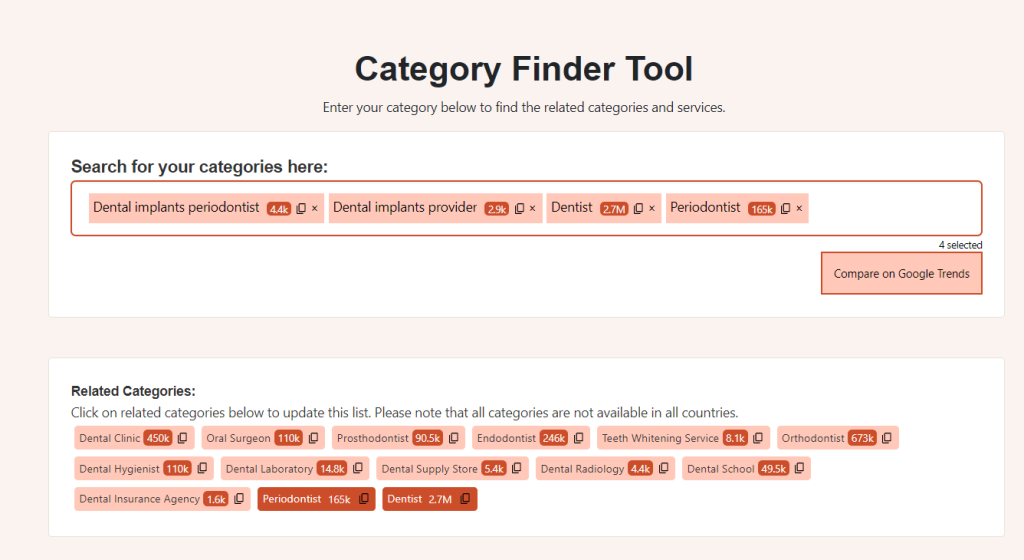
If you don’t want to pay for GMB Everywhere, shop some moving companies on the map and choose the categories that most resonate with your business.
- Add as many categories as possible to your business profile. For example, you can use “Moving and storage service,“ “Moving company,“ “Storage facility,“ “Packaging supply store, “ and other categories that apply.
- Let your primary category on your GBP align with your website title and headers. For context, if you’re using “best-moving company in Texas,” it should match your website headings to ensure consistency in messaging. Here’s an example from San Antonio Moving Company: their GBP is:
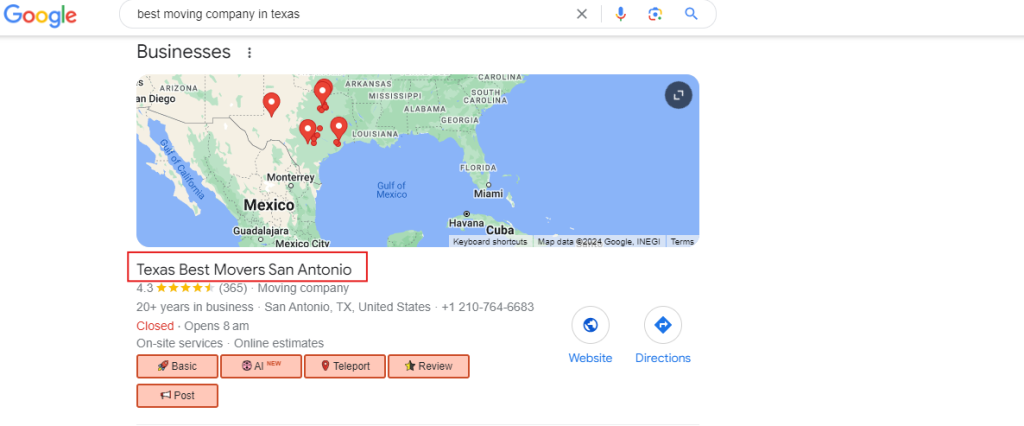
Their website starts with the same: Texas best Movers: San Antonio …:

When you gain visibility for your GBP and customers leave reviews, you can also use keywords when responding to your customers’ reviews or questions. For example, if it’s a good review, don’t just say thank you; include phrases like “moving services” as this company did:

As you can see, it isn’t spammy or forced into the review.
2. Create Location & City Pages
Location pages are different web pages on your website that target the areas in which your business operates. If you operate in Jersey, New York, and Philadelphia, you need a location page for each city. See example here:
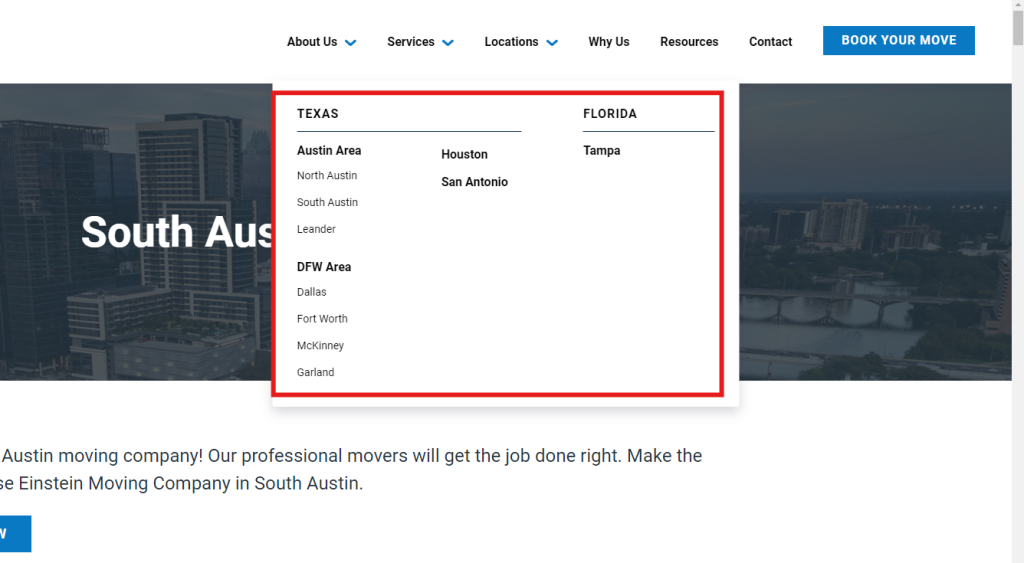
Location pages help you target specific locations using geographical search queries to increase their potential ranking on the SERPs. For example, hyperlocal keywords (search phrases that prospects at a precise location use) can help attract people ready to patronize your services.
Hyperlocal keywords are usually long-tail, less competitive, and more focused, which attracts ready-to-move customers.
And since it makes your business feel closer to searchers, 76% of them can visit your business location within a day. Here’s an example of a hyperlocal keyword:

They showed up on the SERPs for the query “long-distance moving company in Ohio” because they optimized that page to rank.
Another example is “Cali mid-distance moving” and “Cali local moving,” which the company below ranks for:

Now, how do you create a location page?
We wrote about creating location pages here, but here’s an overview of how to get started:
- Select location-specific keywords: Choose the keywords you want to use throughout your webpage and ensure they are the same keywords on your GBP. For example, you could use Texas Moving Company, (business name) + moving truck rental, or (business name) + long-distance moving company in Ohio.
You can also use the People Also Asked section for inspiration:

- Use Location-Specific URLs: You want to add the city or region to the URL page. URLs help Google understand what each page is all about, and it points searchers to the right page:

- Add Location-Specific Images: These could be images or videos of stellar sights in the location. It could even be an image of your workers in action. Here’s an example from a New Jersey company:
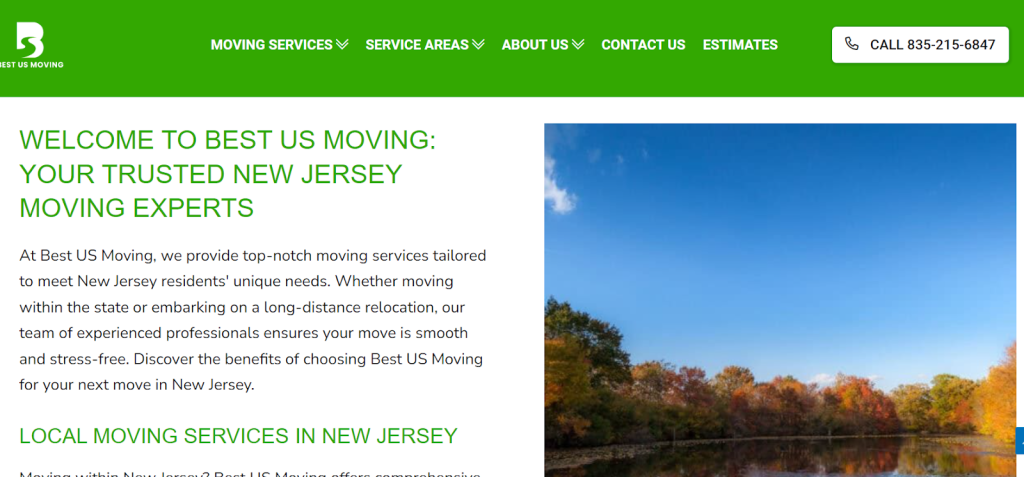
- Location-Specific Content: If your moving company operates in three locations, each page should have different content. You should target keywords specific to each location and include these keywords in the meta description, title, and content of the page.
Rather than copying the same content for each page, you want to add various offers that you provide in each location. You can create a structure you want to follow for each page, but don’t write the same content.
Check out the following images and note how the content is different and unique.
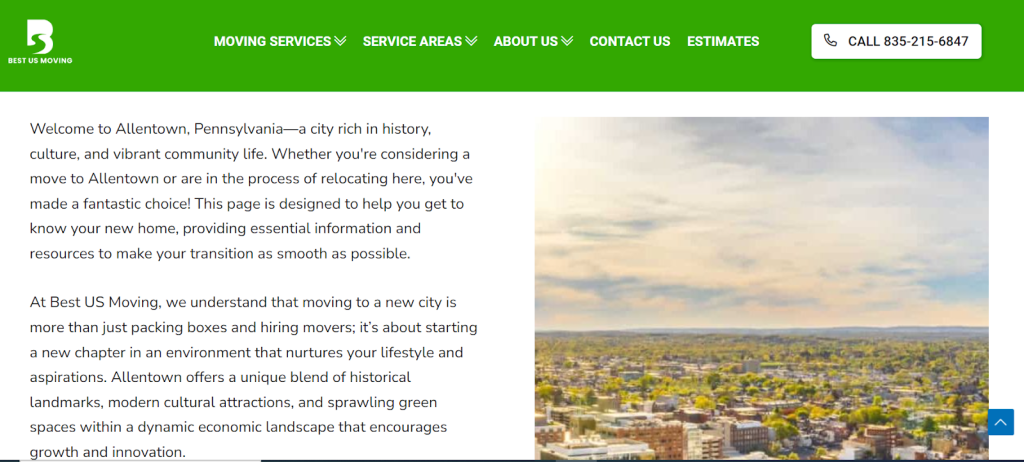
See this, too:
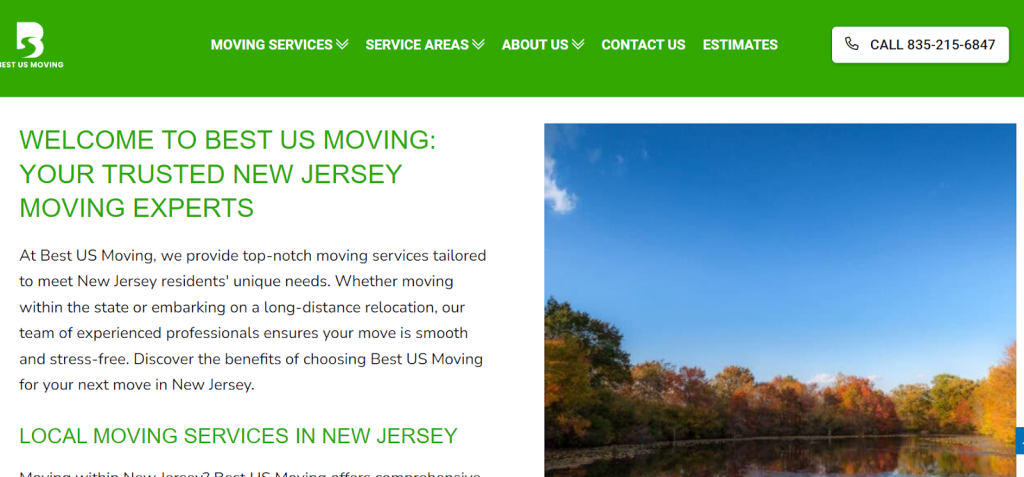
- Use Consistent NAP Details: Each location page should have the same business name, address, and phone number (NAP). This ensures consistency across the web and doesn’t confuse Google bots.
- Add Customer Reviews: Customer reviews show prospects that you’re a reliable moving company, and adding them to your location pages is an easy way to increase trust. Here’s an example from Roadway Moving:
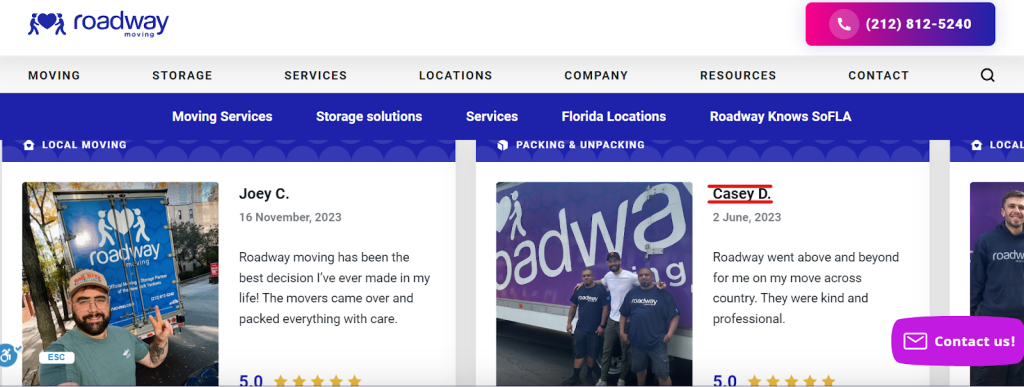
3. Provide Positive User Experience
Experts say 35% of websites experience an increase in conversion rates when they optimize the user experience (especially in checkout processes and overall site usability). Also, happier users are more likely to stay longer, interact with your content, and revisit your website.
All these point to the fact that websites with better user experience have lower bounce rates and higher engagement metrics, which will make visitors looking for your service interested in contacting you.
To improve your existing web design and create a positive user experience, do the following:
- Optimize your website for fast page speed: 40% of users will abandon your website if it takes longer than 3 seconds to load. Many other companies offer the same services as yours, and optimizing your website to load fast may be your competitive advantage in attracting qualified leads for your business.
We’ve written about how to fix slow-loading websites, but here’s a quick overview for you:
- Check and monitor your webpage using Google PageSpeed Insights. It provides insights into what to remove or add to improve your page speed.
- Use tools like TinyPNG and ImageOptim to reduce your images’ file size without compromising quality. These tools remove unnecessary data from the image files to make them smaller and quicker to load.
- Use browser caching to save your site data on user devices so they won’t have to redownload pages they had already visited.
- Optimize your website for mobile devices: More than 60% of website traffic comes from mobile devices, and 92.3% of internet users use mobile phones. This tells you two things:
1. Many people check your website via mobile devices
2. Optimizing your website for usability on mobile increases your chances of converting mobile traffic. Do these things to get started:
- Use a responsive layout.
- Avoid intrusive pop-ups
- Optimize font sizes (at least 14 pixels) to ensure readability on smaller screens.
- Ensure that buttons and links are large enough to be easily tapped with a finger.
- Use clean, simple, and easy-to-navigate web design
- Include a search function to help users find the information they need
- Use clear CTAs: A clear call-to-action (CTA) nudges readers to take a specific action. In your landing pages, your CTA should tell them to contact you for your services today, just like the landing page of this company:

Here’s another example from a company with multiple location pages:
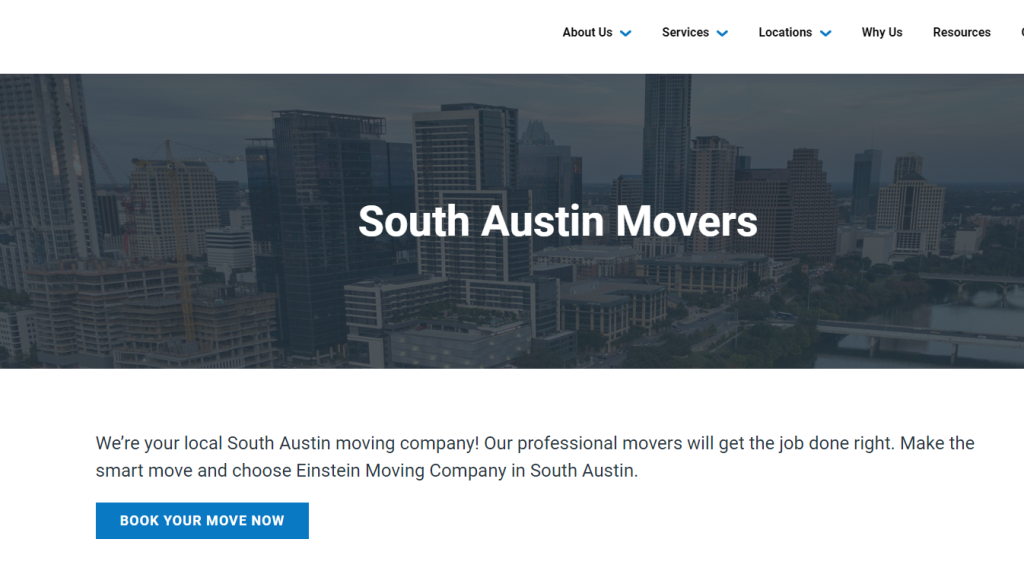
The first sentence here is a hyperlocal keyword like we discussed: “local South Austin moving company” and “Einstein Moving Company in South Austin.”
Their call to action is also intentional: Book your move now.
4. Use Relevant Keywords in Your Content
Finding and using relevant keywords while creating content for your moving company helps you target keywords prospects use to find businesses like yours. Conducting keyword research helps you create content that meets search intent, boost traffic on relevant content, and acquire leads through these strategies.
SEO keywords for moving companies are usually from variations of keywords like:
- local moving services
- long-distance moving
- residential moving
- commercial moving
- packing and unpacking services
- moving supplies and equipment
- storage solutions
- specialty item moving (e.g., pianos, antiques)
- moving tips and resources
- furniture assembly and disassembly
You can expand each category and use keyword research tools like Ahrefs, SEMrush, or Moz to find alternative keywords for your landing pages or content. That’s if you want to manage a blog. For context, related searches for local moving services, according to Ahrefs, are:

You can target any of these target variations (or other terms) while optimizing your website content.
Also, a good rule of thumb is targeting long-tail keywords over short-tail ones. We’ve mentioned this briefly earlier: Short-tail keywords are broad and more competitive than long-tail keywords. On the other hand, long-tail keywords have less competition and capture users who are closer to the buying phase (or, in your case, are actively looking for a moving company).
Here are some examples:
For local moving
- affordable local movers in [city]
- professional local moving services in [city]
- best local movers for small apartments in [city]
For long-distance moving
- affordable local movers in [city]
- professional local moving services in [city]
- best local movers for small apartments in [city]
For specialty moving services
- piano moving services in [city]
- full-service packing and moving for seniors in [city]
- office relocation services for small businesses in [city]
You can also target comparison keywords like:
“[your company] vs [competitor] moving services” to compare your services to another company’s
cheapest moving companies in [city]
best value for money moving services in [city]
These keywords usually have lower search traffic; you can rank for them, as shown below. And if your offerings are attractive (or you seem trustworthy enough), you can convert searchers easily.

To convert searchers, always include your phone numbers and address on every website page and use relevant CTA to nudge visitors to take action.
5. Strategic Link Building
If you have a website, one of the ways to ensure you rank for related keywords is having a strong backlink history. The more high-authority domains (websites) link to your website, the more Google will consider you an authority in your industry. And the more “authority” you have (due to backlinks from trusted domains), the more you’ll show up for your target keywords when someone searches.
In other words, backlink building gives credibility to your website, improves SEO rankings, and establishes your website as a reliable source of information. This gives you enough visibility to attract relevant, high-qualified clicks (from relevant keywords).
Here are some link-building tips for you:
- Guest blogging: This is a smart strategy to increase backlink quality by writing content for other websites. This exposes your brand to new audiences and you can add relevant links (to the content you write) to your website pages.
For example, you guest-write an article about “Full Service Packing and Moving for Seniors in (City) to (City). It’s a comprehensive checklist of what seniors (and their children/guidance) should do during preparations. While writing, you can link to your landing page to refer readers to your website or to one of your blog posts explaining how to downsize existing things.
In this scenario, you increase your backlink quality while sending qualified traffic to your website.
- Build relationships with other websites: Building relationships can strengthen your online presence by increasing authority and brand awareness. This relationship can be mutual blogging or simply showing up to their events as partners in their business activities.
You can follow this step to build a relationship with other websites.
- Identify potential partners in your niche or who have similar audiences, such as moving supply companies, mega retail stores, or recycling centers (for used boxes).
- You can reach out to them through an email or social media text message explaining why you think a partnership would benefit both parties.
- Collaborate with them by creating content together or promoting each other’s services.
They can mention you as a partner on their website and refer to you as a trusted moving company.
6. Technical SEO
This is the process of optimizing your moving company with SEO to improve website architecture and rank on search engines. It is the behind-the-scenes elements that help search engines understand and categorize your website.
This helps with crawling and indexing (as it involves optimizing your sitemaps so that search engines can properly index your web pages). It also focuses on making your website more secure to improve trust and convert visitors.
Some of the critical elements of technical SEO include:
- Website architecture
- Page speed
- Mobile Optimization
- XML sitemaps
- Using robot.txt to direct search engine bots on which pages to crawl and not crawl
- Schema markup
We wrote more about technical SEO here.
The takeaway: Technical SEO improves your overall website performance and accessibility. If your website is discovered on search engines and your web pages attract qualified leads, you can convert visitors and get results from your SEO efforts.
Conclusion
Every business wants to make sales. You can do that by converting visitors from your optimized GBP, location pages, and website content. The tactics in our SEO for moving companies guide can help you rank higher on search engines for local queries, increase leads, and convert website visitors to customers. If you need help with any aspect of SEO or link-building, we are a content marketing agency for local businesses with many success stories, and we would love to partner with you. Request a Proposal to see how we can help your moving company.
